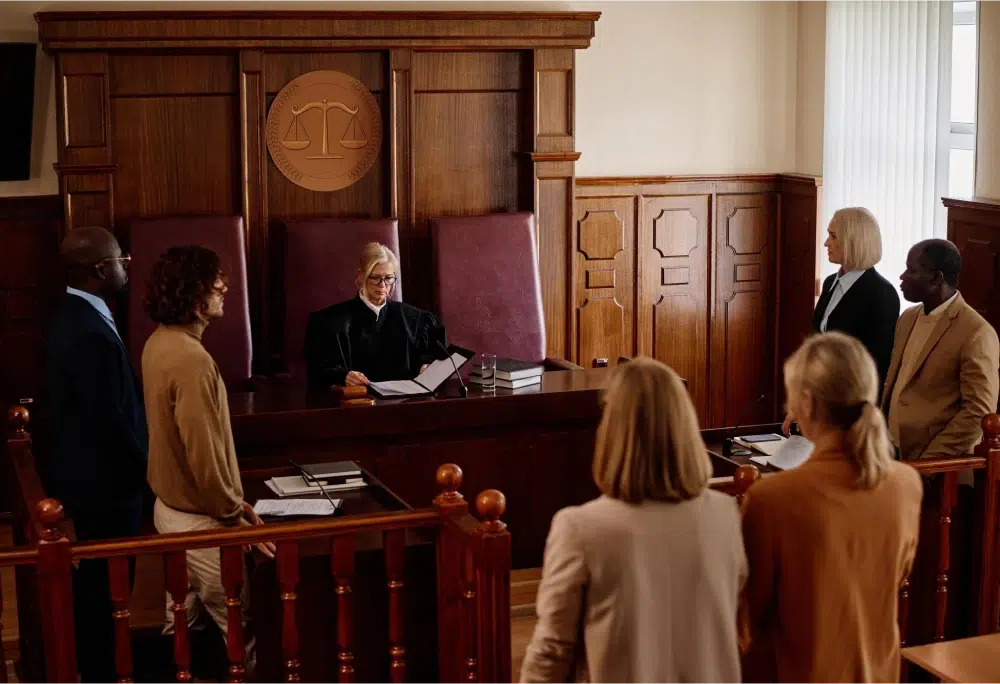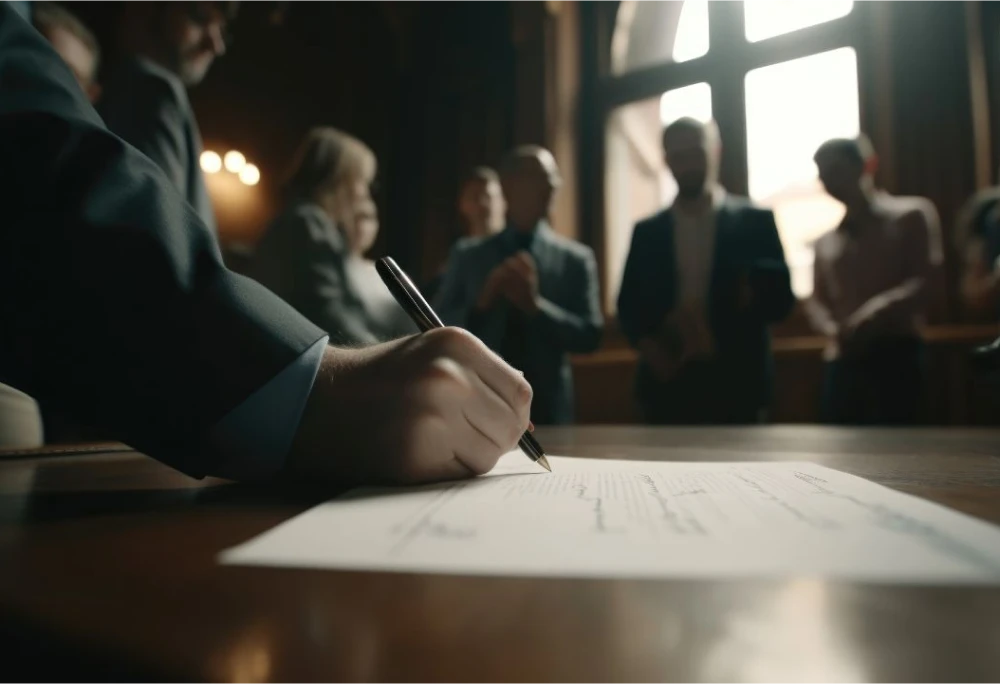When it comes to seeking justice, a class action lawsuit stands as a powerful tool for people united by common grievances. Whether it’s a matter of consumer protection, employment discrimination, product liability, or violation of human rights, these legal claims provide a route to seek damages or settlements for a group, rather than on an individual basis. This collective approach not only guarantees economies of scale in legal pursuits but also amplifies the impact of the litigation. Designed to hold companies accountable on a grand scale, class action suits ensure that no claim is too small when it stands alongside many, echoing the principle of strength in numbers.
Our guide will cover the core aspects of launching a class action lawsuit, from determining if your case qualifies under the Federal Rules of Civil Procedure or falls within a definitional scope such as employment discrimination or consumer protection. We’ll walk you through selecting a competent class action lawyer, filing the initial complaint in the appropriate federal or civil court, navigating the nuances of achieving class certification, and managing the complexities of the class action process.
This comprehensive step-by-step guide aims to empower you with the knowledge to understand your rights, the potential for a class action lawsuit settlement, and how to proceed with your legal claims effectively, ensuring that your voice, alongside those of others, is heard loud and clear.
What is a Class Action Lawsuit?
A class action lawsuit is a legal mechanism that allows a group of individuals or entities, who have suffered similar harm from the same source, to collectively sue a defendant. This type of lawsuit is valuable when the individual claims might be too small to pursue separately, making it economically impractical for one lawsuit. By uniting numerous similar legal claims, a class action provides strength in numbers, reducing legal expenses and increasing the efficiency of the legal process.
Definition
In simpler terms, a class action is a procedural device in the legal system that permits one or several plaintiffs to file and prosecute a lawsuit on behalf of a larger group, known as the “class”. This group has encountered common legal grievances, typically against a corporation or institution, whose actions have allegedly caused them similar injuries or losses. The class is represented by one or more member(s) known as the “lead plaintiffs” or “named plaintiffs“, who appear on the court documents and work to advance the interests of the entire group.

Benefits
The benefits of a class action lawsuit are manifold. Firstly, it consolidates numerous similar lawsuits into one representative lawsuit, which streamlines the legal process and reduces the burden on courts. Economically, it distributes the costs of litigation among all class members, making it a more viable option for individuals with smaller claims.

Class actions also enhance judicial efficiency by resolving multiple disputes in one ruling and extend protections to those who might not have individually sought legal redress. For instance, a successful class action can enforce changes in corporate behavior, benefiting not just the class members but also potentially preventing future harm to others.
In essence, class action lawsuits embody the principle that there is strength in numbers, providing a powerful tool for individuals to seek justice and remedy against larger, resource-rich defendants. Through this legal process, even those with minor individual damages can collectively address grievances and effect change, making it an essential aspect of civil litigation and consumer protection.
Steps to Determine if Your Case Qualifies
Determining if your situation qualifies for a class action lawsuit involves several crucial steps. Here’s a simplified guide to help you assess whether you can pursue a class action.

Identifying Common Harm
-
- Numerosity
Your case must involve a sufficient number of people affected by the same issue. If you’ve discovered a group of individuals sharing similar complaints, this likely meets the numerosity requirement necessary for a class action.
-
- Typicality
Your situation should be typical of the claims of other class members. For instance, if your insurance policy was rescinded like those of others in the group, this condition is satisfied.
-
- Commonality
There must be common questions of law or fact across the class. If the same standard policy or violation affects the group, this establishes a common legal ground.
-
- Adequate Representation
The lead plaintiff should adequately protect the interests of the entire class without any conflicts. Ensure that the representative has similar interests and damages as the other class members.

Consulting with an Attorney
-
- Experienced Evaluation
It’s crucial to consult with a class action lawyer who can evaluate the specifics of your case and confirm if it meets the class action criteria. This step is essential as the attorney will assess factors like the predominance of common issues over individual ones and the superiority of a class action over individual lawsuits.
-
- Legal Guidance
A class action attorney will also guide you through the process of filing and managing the lawsuit, ensuring that all legal prerequisites are met and enhancing the chances of your case being certified as a class action.

By following these steps and consulting with the right legal expert, you can determine if your case qualifies for a class action lawsuit, potentially leading to a more effective resolution of your grievances.
Hiring a Class Action Lawyer

Finding a Specialist
When embarking on a class action lawsuit, securing the right legal representation is crucial. It’s not just about finding any attorney but one who specializes in class action litigation. Such lawyers are equipped with the skills required to manage the complexities of class action cases. They often have experience in handling large-scale disputes and understand the nuances of representing a group rather than an individual.
When seeking a specialist, it’s important to verify their track record in class action lawsuits. Look for attorneys who have served as lead counsel in similar cases and have a history of securing favorable outcomes for the class. Law firms that frequently handle class action suits may already be familiar with cases similar to yours, which can be an advantage in both the certification process and the trial.
What to Look For
-
- Experience
Ensure that the lawyer has substantial experience in class action litigation, particularly in cases similar to yours. Check their past case results to gauge their success rate and experience in the field.
-
- Representation Capabilities
It is essential that the lawyer can handle the case personally rather than delegating it to others within the firm. This direct involvement can make a significant difference in the understanding and handling of your case.
-
- Resource Availability
Class action lawsuits can be resource-intensive. Choose a lawyer or law firm with the necessary resources to sustain a prolonged legal battle, including access to expert witnesses and investigators.
-
- Client Communication
Given the collective nature of class actions, choose a lawyer who values your input and communicates clearly and regularly. They should be responsive and take the time to address your concerns, ensuring you feel represented and informed throughout the process.
-
- Cost Efficiency
Since the legal fees in class actions are often contingent on the outcome, it’s important to discuss the fee structure upfront. Some lawyers may also offer to manage the lawsuit costs effectively, ensuring that the representation is not only skilled but also cost-efficient.
-
- Jurisdictional Knowledge
Class actions can span different jurisdictions, which may have varying legal landscapes. An experienced lawyer will understand the procedural differences and be able to navigate through state, district, or federal courts as needed.
Choosing the right class action lawyer is a pivotal step in your pursuit of justice. By focusing on these key areas, you can find a legal representative who not only has the experience to manage your case effectively but also aligns with the interests of all class members, ensuring a unified and powerful approach against the defendant.

Filing the Initial Complaint
Filing the initial complaint in a class action lawsuit is a critical step that sets the stage for the entire legal process. This document formally presents the case against the defendant(s) and outlines the scope of the issues at hand.

Details to Include
-
- Plaintiff and Defendant Information
The complaint should start by listing the names and details of one or more plaintiffs who are filing the lawsuit, along with the defendant(s) responsible for the alleged grievances.
-
- Description of the Grievances
Clearly describe the events or policies that have led to the lawsuit. This section should detail the specific actions or failures of the defendant(s) that have caused harm to the plaintiffs and the proposed class members.
-
- Class Definition
Define who is included in the class, usually characterized by individuals or entities that have suffered similar harm under similar circumstances. It’s crucial to demonstrate that these issues are common to all class members.
-
- Claims for Relief
Outline the legal basis for the claims and the type of relief or compensation being sought. This could include monetary damages, injunctions, or declaratory relief.
Submitting to Court
-
- Choose the Right Jurisdiction
Depending on the nature of the case, the complaint may be filed in either state or federal court. The choice of court should comply with legal jurisdiction requirements and where the defendant operates or has significant presence.
-
- Legal Procedures and Timelines
Each court has specific rules about how a complaint must be filed, including formatting, fees, and deadlines. It is essential to adhere to these procedural requirements to avoid delays or dismissal of the case.
-
- Official Submission
Once the complaint is prepared, it must be officially submitted to the court. This typically involves filing through the court’s clerk office, either in person or electronically, depending on the court’s system.
-
- Service of Process
After filing, the complaint must be formally served to the defendant(s), notifying them of the lawsuit and giving them an opportunity to respond.
By meticulously preparing and submitting the initial complaint, plaintiffs set a strong foundation for their class action lawsuit. This step not only formally initiates the legal proceedings but also outlines the scope and scale of the issues to be addressed, paving the way for potential class certification and further legal actions.
Gaining Class Certification
Gaining class certification is a pivotal step in a class action lawsuit, where the court evaluates whether the legal action can proceed on behalf of a group. This process is governed by Rule 23 of the Federal Rules of Civil Procedure, which outlines specific criteria that must be met.

Process Overview
-
- Filing a Motion
The process begins when the plaintiff files a motion for class certification. This motion must demonstrate compliance with the requirements of Rule 23.
-
- Criteria for Certification
The court assesses several key criteria
-
- Adequate Class Definition
The class must be defined clearly and precisely, ensuring it includes those affected by the issue without encompassing individuals unrelated to the case.
-
- Numerosity
There must be a sufficiently large number of class members to justify a class action.
-
- Commonality
There should be questions of law or fact common to the class.
-
- Typicality
Claims or defenses of the class representatives must be typical of those of the class.
-
- Adequacy
Representatives must fairly and adequately protect the interests of the class.
-
- Rule 23(b) Requirements
Additionally, the plaintiff must satisfy one of the conditions under Rule 23(b):
-
- Risk of Inconsistent Adjudications
Individual actions could result in differing outcomes that would establish incompatible standards of conduct.
-
- Injunctive or Declaratory Relief
The defendant has acted or refused to act on grounds applicable to the class, making final injunctive relief or corresponding declaratory relief appropriate for the class as a whole.
-
- Predominance and Superiority
Questions common to the class predominate over any questions affecting only individual members, and a class action is superior for fairly and efficiently adjudicating the controversy.

Judge’s Role
The judge plays a critical role in the class certification process.
-
- Evaluate the Evidence
The judge examines the evidence presented to determine if the requirements of Rule 23 are met. This involves a thorough analysis rather than mere speculation.
-
- Resolve Disputes
Any factual or legal disputes relevant to the Rule 23 criteria must be resolved by the judge to ensure that the certification is based on solid grounds.
-
- Determine Applicability
The judge decides if the case should proceed as a class action, ensuring that it meets the legal prerequisites for such a proceeding. This decision is crucial as it affects the course of the lawsuit and the potential remedies available to the class members.
By meticulously evaluating these factors, the court ensures that only appropriate cases are certified as class actions, maintaining the integrity of this type of legal recourse. This certification process not only impacts the plaintiffs but also sets a precedent for how similar future cases might be handled.
Managing the Class Action Process

Communicating with Class Members
Managing a class action lawsuit involves intricate communication strategies to ensure all class members are informed and their rights are protected. The Federal Rules of Civil Procedure and ethical guidelines set the framework for these communications, particularly between the certification and the opt-out deadline.

- Pre-Certification Communications
Prior to class certification, attorneys may engage with potential class members to gather information and discuss the case. This period allows plaintiff’s counsel to communicate freely with unrepresented potential class members, as they are not yet considered clients of the class counsel.
-
- Post-Certification Communications
After the class is certified, communication dynamics change significantly. At this stage, class members who have not opted out are deemed represented by class counsel. Consequently, defense counsel must direct all communications regarding the litigation to class counsel rather than to the class members directly.
-
- Ethical Considerations
Throughout the process, it is crucial to adhere to ethical standards to prevent misleading or coercive communications. Courts may intervene to regulate interactions with class members if they threaten the fairness of the litigation.
Handling Objections and Opt-outs
Objections and opt-outs are critical aspects of managing a class action lawsuit, providing checks and balances within the process.
-
- Right to Object
Class members have the right to object to the terms of a proposed settlement under Federal Rule of Civil Procedure 23(e). Objections can help the court assess the fairness of the settlement by introducing adversarial perspectives.
-
- Opt-out Process
Members of the class also have the right to opt-out of the settlement, allowing them to pursue individual claims if they prefer. This right is crucial for those who might find the class action settlement unsatisfactory or who wish to seek a different legal remedy.
-
- Managing Delays
Handling objections and managing the opt-out process can delay the final approval and disbursement of the settlement. Legal teams must prepare for potential appeals and additional hearings prompted by objections.
By effectively managing communications and addressing the concerns of class members through the objection and opt-out processes, attorneys can navigate the complexities of class action lawsuits while upholding the rights and interests of all parties involved.

Conclusion
Through this guide, we’ve covered the steps and considerations for initiating a class action lawsuit, from discerning whether your case qualifies to the intricacies of filing an initial complaint, securing a competent lawyer, and managing the class action process with diligence and strategic communication.
Bringing together individuals with shared grievances can not only amplify their collective voice but also level the playing field against formidable opponents, ensuring that justice is within reach, regardless of the individual’s capacity to engage in solitary legal battles.
MAC Legal P.A. specializes in civil litigation, property damage, and real estate litigation. We are your dedicated family law firm in South Florida, providing top-notch legal representation. Reach out to us for a free consultation at (754) 253-3452 or info@maclegalpa.com. Visit us at 4601 Sheridan Street Suite 205, Hollywood, FL 33021.









